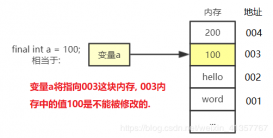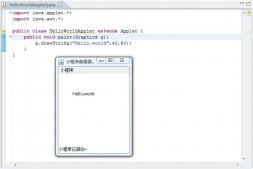前言:
最近公司正在進行業務組件化進程,其中的路由實現用到了Java的反射機制,既然用到了就想著好好學習總結一下,其實無論是之前的EventBus 2.x版本還是Retrofit、早期的View注解框架都或多或少的用到Java的反射機制。
什么是Java反射機制?
JAVA反射機制是在運行狀態中,對于任意一個類,都能夠知道這個類的所有屬性和方法;對于任意一個對象,都能夠調用它的任意一個方法;這種動態獲取的以及動態調用對象的方法的功能稱為Java的反射機制。
反射機制提供了哪些功能?
- 在運行時判定任意一個對象所屬的類
- 在運行時構造任意一個類的對象;
- 在運行時判定任意一個類所具有的成員變量和方法;
- 在運行時調用任意一個對象的方法;
- 生成動態代理;
Java反射機制類:
|
1
2
3
4
5
|
java.lang.Class; //類 java.lang.reflect.Constructor;//構造方法 java.lang.reflect.Field; //類的成員變量 java.lang.reflect.Method;//類的方法java.lang.reflect.Modifier;//訪問權限 |
Java反射機制實現:
1.)class對象的獲取
|
1
2
3
4
5
6
7
8
9
10
11
|
//第一種方式 通過對象getClass方法Person person = new Person();Class<?> class1 = person.getClass();//第二種方式 通過類的class屬性class1 = Person.class;try { //第三種方式 通過Class類的靜態方法——forName()來實現 class1 = Class.forName("com.whoislcj.reflectdemo.Person");} catch (ClassNotFoundException e) { e.printStackTrace();} |
2.)獲取class對象的摘要信息
|
1
2
3
4
5
6
7
8
9
10
11
12
13
14
15
|
boolean isPrimitive = class1.isPrimitive();//判斷是否是基礎類型boolean isArray = class1.isArray();//判斷是否是集合類boolean isAnnotation = class1.isAnnotation();//判斷是否是注解類boolean isInterface = class1.isInterface();//判斷是否是接口類boolean isEnum = class1.isEnum();//判斷是否是枚舉類boolean isAnonymousClass = class1.isAnonymousClass();//判斷是否是匿名內部類boolean isAnnotationPresent = class1.isAnnotationPresent(Deprecated.class);//判斷是否被某個注解類修飾String className = class1.getName();//獲取class名字 包含包名路徑Package aPackage = class1.getPackage();//獲取class的包信息String simpleName = class1.getSimpleName();//獲取class類名int modifiers = class1.getModifiers();//獲取class訪問權限Class<?>[] declaredClasses = class1.getDeclaredClasses();//內部類Class<?> declaringClass = class1.getDeclaringClass();//外部類 |
3.)獲取class對象的屬性、方法、構造函數等
|
1
2
3
4
5
6
7
8
9
10
11
12
13
14
15
16
17
18
19
20
21
22
23
24
25
26
27
28
29
|
Field[] allFields = class1.getDeclaredFields();//獲取class對象的所有屬性Field[] publicFields = class1.getFields();//獲取class對象的public屬性try { Field ageField = class1.getDeclaredField("age");//獲取class指定屬性 Field desField = class1.getField("des");//獲取class指定的public屬性} catch (NoSuchFieldException e) { e.printStackTrace();}Method[] methods = class1.getDeclaredMethods();//獲取class對象的所有聲明方法Method[] allMethods = class1.getMethods();//獲取class對象的所有方法 包括父類的方法Class parentClass = class1.getSuperclass();//獲取class對象的父類Class<?>[] interfaceClasses = class1.getInterfaces();//獲取class對象的所有接口Constructor<?>[] allConstructors = class1.getDeclaredConstructors();//獲取class對象的所有聲明構造函數Constructor<?>[] publicConstructors = class1.getConstructors();//獲取class對象public構造函數try { Constructor<?> constructor = class1.getDeclaredConstructor(new Class[]{String.class});//獲取指定聲明構造函數 Constructor publicConstructor = class1.getConstructor(new Class[]{});//獲取指定聲明的public構造函數} catch (NoSuchMethodException e) { e.printStackTrace();}Annotation[] annotations = class1.getAnnotations();//獲取class對象的所有注解Annotation annotation = class1.getAnnotation(Deprecated.class);//獲取class對象指定注解Type genericSuperclass = class1.getGenericSuperclass();//獲取class對象的直接超類的 TypeType[] interfaceTypes = class1.getGenericInterfaces();//獲取class對象的所有接口的type集合 |
4.)class對象動態生成
|
1
2
3
4
5
|
//第一種方式 Class對象調用newInstance()方法生成Object obj = class1.newInstance();//第二種方式 對象獲得對應的Constructor對象,再通過該Constructor對象的newInstance()方法生成Constructor<?> constructor = class1.getDeclaredConstructor(new Class[]{String.class});//獲取指定聲明構造函數obj = constructor.newInstance(new Object[]{"lcj"}); |
5.)動態調用函數
|
1
2
3
4
5
6
7
8
9
10
11
12
13
14
15
16
17
18
19
20
|
try { // 生成新的對象:用newInstance()方法 Object obj = class1.newInstance(); //判斷該對象是否是Person的子類 boolean isInstanceOf = obj instanceof Person; //首先需要獲得與該方法對應的Method對象 Method method = class1.getDeclaredMethod("setAge", new Class[]{int.class}); //調用指定的函數并傳遞參數 method.invoke(obj, 28); method = class1.getDeclaredMethod("getAge"); Object result = method.invoke(obj, new Class[]{});} catch (InstantiationException e) { e.printStackTrace();} catch (IllegalAccessException e) { e.printStackTrace();} catch (NoSuchMethodException e) { e.printStackTrace();} catch (InvocationTargetException e) { e.printStackTrace();} |
6.)通過反射機制獲取泛型類型
例如下面這種結構
|
1
2
3
4
5
6
|
//People類public class People<T> {}//Person類繼承People類public class Person<T> extends People<String> implements PersonInterface<Integer> {}//PersonInterface接口public interface PersonInterface<T> {} |
獲取泛型類型
|
1
2
3
4
5
6
7
8
|
Person<String> person = new Person<>();//第一種方式 通過對象getClass方法Class<?> class1 = person.getClass();Type genericSuperclass = class1.getGenericSuperclass();//獲取class對象的直接超類的 TypeType[] interfaceTypes = class1.getGenericInterfaces();//獲取class對象的所有接口的Type集合getComponentType(genericSuperclass);getComponentType(interfaceTypes[0]); |
getComponentType具體實現
|
1
2
3
4
5
6
7
8
9
10
11
12
13
14
15
16
|
private Class<?> getComponentType(Type type) {Class<?> componentType = null;if (type instanceof ParameterizedType) { //getActualTypeArguments()返回表示此類型實際類型參數的 Type 對象的數組。 Type[] actualTypeArguments = ((ParameterizedType) type).getActualTypeArguments(); if (actualTypeArguments != null && actualTypeArguments.length > 0) { componentType = (Class<?>) actualTypeArguments[0]; }} else if (type instanceof GenericArrayType) { // 表示一種元素類型是參數化類型或者類型變量的數組類型 componentType = (Class<?>) ((GenericArrayType) type).getGenericComponentType();} else { componentType = (Class<?>) type;}return componentType;} |
6.)通過反射機制獲取注解信息
這里重點以獲取Method的注解信息為例
|
1
2
3
4
5
6
7
8
9
10
11
12
13
14
|
try { //首先需要獲得與該方法對應的Method對象 Method method = class1.getDeclaredMethod("jumpToGoodsDetail", new Class[]{String.class, String.class}); Annotation[] annotations1 = method.getAnnotations();//獲取所有的方法注解信息 Annotation annotation1 = method.getAnnotation(RouterUri.class);//獲取指定的注解信息 TypeVariable[] typeVariables1 = method.getTypeParameters(); Annotation[][] parameterAnnotationsArray = method.getParameterAnnotations();//拿到所有參數注解信息 Class<?>[] parameterTypes = method.getParameterTypes();//獲取所有參數class類型 Type[] genericParameterTypes = method.getGenericParameterTypes();//獲取所有參數的type類型 Class<?> returnType = method.getReturnType();//獲取方法的返回類型 int modifiers = method.getModifiers();//獲取方法的訪問權限} catch (NoSuchMethodException e) { e.printStackTrace();} |
反射機制的應用場景:
- 逆向代碼 ,例如反編譯
- 與注解相結合的框架 例如Retrofit
- 單純的反射機制應用框架 例如EventBus 2.x
- 動態生成類框架 例如Gson
反射機制的優缺點:
優點:運行期類型的判斷,動態類加載,動態代理使用反射。
缺點: 性能是一個問題,反射相當于一系列解釋操作,通知jvm要做的事情,性能比直接的java代碼要慢很多。
總結:
Java的反射機制在平時的業務開發過程中很少使用到,但是在一些基礎框架的搭建上應用非常廣泛,今天簡單的總結學習了一下,還有很多未知的知識等以后用到再做補充。
以上就是本文的全部內容,希望對大家的學習有所幫助,也希望大家多多支持服務器之家。














